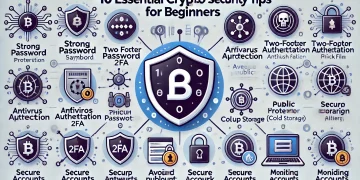The cryptocurrency fundraising landscape has evolved significantly since the introduction of Initial Coin Offerings (ICOs) in 2013. As the market matured, Initial Exchange Offerings (IEOs) emerged as an alternative fundraising method, addressing some of the challenges and risks associated with ICOs. This comprehensive guide explores the key differences between these two fundraising mechanisms and what they mean for investors.
Understanding Initial Coin Offerings (ICOs)
An Initial Coin Offering is a fundraising method where a blockchain project sells tokens directly to investors to raise capital for development. Similar to an Initial Public Offering (IPO) in traditional finance, an ICO allows investors to purchase tokens at an early stage, often at a discounted price. However, unlike IPOs, ICOs are largely unregulated and don’t provide ownership rights in the company.
The ICO Process
The ICO process begins with project development, where a team creates a blockchain-based project and develops a whitepaper outlining their vision, technology, and tokenomics. Once the groundwork is laid, the team creates tokens on their chosen blockchain platform. A marketing campaign follows to attract potential investors, leading to the token sale phase where investors can purchase tokens directly from the project. Finally, the tokens are distributed to investors’ wallets according to their contributions.
Understanding Initial Exchange Offerings (IEOs)
An Initial Exchange Offering represents an evolution in cryptocurrency fundraising, where token sales are conducted directly through an established cryptocurrency exchange platform. The exchange serves as an intermediary between the project and investors, providing crucial due diligence and security measures that are often absent in ICOs. This partnership between the exchange and project team creates a more structured and secure environment for token sales.
The IEO Process
The IEO process starts with project teams applying for and securing partnership with an exchange. The exchange conducts thorough verification of the project, team, and technology. Marketing efforts are collaborative, leveraging both the exchange’s platform and the project team’s networks. During the token sale, investors purchase tokens through the exchange’s familiar interface, and upon completion, tokens become immediately available for trading on the exchange platform.
Core Differences Between ICOs and IEOs
Intermediary Role and Trust
The fundamental distinction between ICOs and IEOs lies in the role of intermediaries. ICOs operate on a direct model where projects interact with investors without middlemen, while IEOs introduce an exchange as a trusted intermediary. This difference cascades into various aspects of the fundraising process and significantly impacts the level of trust investors can place in the project.
Due Diligence and Verification
Due diligence in ICOs falls entirely on the investors’ shoulders, requiring them to verify project legitimacy, team credentials, and technical viability. IEOs shift this burden partially to the exchange, which performs initial screening and verification before allowing projects on their platform. This added layer of scrutiny enhances investor protection but typically comes with higher costs and longer approval processes.
The Investment Experience
Participation Process
The investment process varies considerably between ICOs and IEOs. ICO participation often requires technical knowledge, including wallet management and direct blockchain interactions. Investors must navigate smart contracts, manage private keys, and ensure proper token receipt. This technical complexity can be daunting for newcomers to the cryptocurrency space.
Trading and Liquidity
IEOs streamline the investment process significantly by utilizing the exchange’s existing infrastructure. Investors can participate using their exchange accounts, eliminating the need for separate wallet setup and complex transaction processes. The exchange handles token distribution automatically, and investors can begin trading immediately after the sale concludes.
Security Considerations
Risk Management
Security represents a critical concern in cryptocurrency fundraising. ICOs have historically been vulnerable to various risks, including fraudulent projects, smart contract vulnerabilities, and phishing attacks. The direct nature of ICO investments means investors must take full responsibility for their security measures and risk assessment.
Protection Mechanisms
IEOs mitigate many security risks through exchange oversight. The exchange’s security infrastructure protects investor funds, while their verification processes help filter out potentially fraudulent projects. However, this security comes with trade-offs, including dependence on the exchange’s systems and potential centralization risks.
Future Outlook
The cryptocurrency fundraising landscape continues to evolve, with both ICOs and IEOs maintaining relevance for different types of projects. While IEOs have addressed many of the security and trust issues associated with ICOs, both models have their place in the market. The choice between them often depends on project goals, investor preferences, and regulatory considerations.
Frequently Asked Questions
General Questions
Q: Which is safer, ICO or IEO? A: IEOs generally offer better security through exchange vetting processes and infrastructure, but this doesn’t guarantee investment success.
Q: What are the typical returns on ICO/IEO investments? A: Returns vary significantly and can range from total loss to substantial gains. Past performance doesn’t guarantee future results.
Participation and Process
Q: Can I participate from any country? A: Participation depends on your jurisdiction’s regulations and the project’s restrictions. IEOs often have stricter geographic limitations.
Q: What’s the minimum investment amount? A: Minimums vary by project. ICOs typically have lower thresholds, while IEOs may have higher minimums set by exchanges.
Technical Aspects
Q: How long does token distribution take? A: ICO tokens may take days or weeks for distribution, while IEO tokens are usually available immediately through the exchange.
Q: Can I trade tokens immediately? A: IEO tokens can typically be traded right away on the hosting exchange. ICO tokens may have lock-up periods and require exchange listings.
Legal and Security
Q: Are these tokens considered securities? A: Classification depends on token characteristics and jurisdiction. Many regions treat utility tokens differently from security tokens.
Q: How can I protect myself from scams? A: Conduct thorough research, verify credentials, and only invest through reputable platforms. For ICOs, be especially wary of unsolicited offers.
Conclusion
Both ICOs and IEOs present unique advantages and challenges for investors. While ICOs offer direct access and potentially better prices, IEOs provide enhanced security and convenience through exchange oversight. Success in either method requires careful research, risk management, and adherence to best practices. As the cryptocurrency market continues to mature, investors should stay informed about evolving fundraising models and regulatory changes while maintaining a balanced approach to investment opportunities.






























